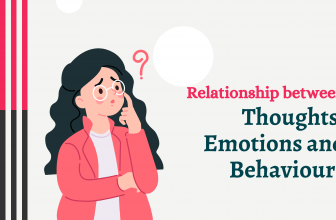Person-Centered Therapy
Person-centered therapy was developed by Carl Rogers in the 1940s. This type of therapy diverged from the traditional model of the therapist as an expert and moved instead toward a nondirective, empathic approach that empowers and motivates the client in the therapeutic process.
The therapy is based on Rogers’s belief that every human being strives for and has the capacity to fulfill his or her own potential. Person-centered therapy, also known as Rogerian therapy, has had a tremendous impact on the field of psychotherapy and many other disciplines.
This therapy teaches us that we all have within ourselves vast resources for self-understanding and as such we are the best experts of ourselves.
ROGERIAN THEORY IN PSYCHOTHERAPY
Rather than viewing people as inherently flawed, with problematic behaviors and thoughts that require treatment, person-centered therapy identifies that each person has the capacity and desire for personal growth and change. Rogers termed this natural human inclination “actualizing tendency,” or self-actualization. He likened it to the way that other living organisms strive toward balance, order, and greater complexity. According to Rogers, “Individuals have within themselves vast resources for self-understanding and for altering their self-concepts, basic attitudes, and self-directed behavior; these resources can be tapped if a definable climate of facilitative psychological attitudes can be provided.”
The person-centered therapist learns to recognize and trust human potential, providing clients with empathy and unconditional positive regard to help facilitate change. The therapist avoids directing the course of therapy by following the client’s lead whenever possible. Instead, the therapist offers support, guidance, and structure so that the client can discover personalized solutions within themselves.
Person-centered therapy was at the forefront of the humanistic psychology movement, and it has influenced many therapeutic techniques and the mental health field, in general. Rogerian techniques have also influenced numerous other disciplines, from medicine to education.
_______________
The person-centered counsellor is not an expert; rather the client is seen as an expert on themselves and the person-centered counsellor encourages the client to explore and understand themselves and their troubles.
– Counsellor Mary-Claire Wilson
________________
SIX FACTORS NECESSARY FOR GROWTH IN ROGERIAN THEORY:
Rogers identified six key factors that stimulate growth within an individual. He suggested that when these conditions are met, the person will gravitate toward a constructive fulfillment of potential. According to Rogerian theory, the six factors necessary for growth are:
-
The Therapist-Client Psychological Contact:
This first factor states that a therapist and client must need to connect for the real work to begin in order for the client to achieve positive personal change. The client needs to feel that the therapist genuinely cares about their thoughts and feelings in the session and for sessions to come. The therapist will demonstrate how much they care about their client in a variety of ways, but the most important thing is that there are vulnerability and honesty in the sessions. When the client feels like they’re safe, they’ll reveal more about themselves and come to a sense of peace within themselves.
-
Client Incongruence or Vulnerability:
A discrepancy between the client’s self-image and actual experience leaves him or her vulnerable to fears and anxieties. The client needs to feel like they can be vulnerable in a person-centered therapy session so that change can happen. They have a perception of their self-image. They’re sitting in the therapy session, and they may be unaware of how vulnerable they are. This factor is also called client incongruence or vulnerability. What it means is that they’re aware of the fact that they’re expressing genuine emotions.
-
Therapist Congruence or Genuineness:
Congruence is the most important attribute in counseling, according to Rogers. The therapist should be self-aware and genuine. This does not imply that the therapist be a picture of perfection, but that he or she be true to him- or herself and the client needs to feel like they can trust their therapist. This means that, unlike the psychodynamic therapist who generally maintains a ‘blank screen’ and reveals little of their own personality in therapy, the Rogerian is keen to allow the client to experience them as they really are.
-
Therapist Unconditional Positive Regard (UPR):
The next Rogerian core condition is unconditional positive regard. The clients’ experiences, positive or negative, should be accepted by the therapist without any conditions or judgment. Rogers believed that for people to grow and fulfill their potential it is important that they are valued as themselves and . This refers to the therapist’s deep and genuine caring for the client. The therapist may not approve of some of the client’s actions, but the therapist does approve of the client. In short, the therapist needs an attitude of “I’ll accept you as you are.” The person-centered counselor is thus careful to always maintain a positive attitude to the client, even when disgusted by the client’s actions.
-
Therapist Empathy:
Empathy is the ability to understand what the client is feeling. This refers to the therapist’s ability to understand sensitively and accurately [but not sympathetically] the client’s experience and feelings in the here-and-now. It shows the therapist’s care about their client’s feelings, and they want to validate those emotions. When the client feels like their therapist is empathetic, they’re more apt to share deeply vulnerable information, and there will be genuine work in therapy.
In the words of Rogers (1959), accurate empathic understanding is as follows:
“The state of empathy, or being empathic, is to perceive the internal frame of reference of another with accuracy and with the emotional components and meanings which pertain thereto as if one were the person, but without ever losing the ‘as if’ condition. Thus it means to sense the hurt or the pleasure of another as he senses it and to perceive the causes thereof as he perceives them, but without ever losing the recognition that it is as if I were hurt or pleased and so forth. If this ‘as if’ quality is lost, then the state is one of identification”
6. Client Perception
To some degree, the client perceives the therapist’s unconditional positive regard and empathic understanding. This is communicated through the words and behaviors of the therapist. The client needs to perceive the therapist as having that unconditional positive regard and being empathetic. They need to feel like their therapist is non-judgmental and that their words and actions match.
Conclusion
Because the person-centered counselor places so much emphasis on genuineness and on being led by the client, they do not place the same emphasis on boundaries of time and technique as would a psychodynamic therapist. If they judged it appropriate, a person-centered counselor might diverge considerably from orthodox counseling techniques.








